Dilation is a signs that your cervix is opening and labor may be close! But, since most of us can’t check our cervixes, what are some signs that you are dilating that you can watch for at home?
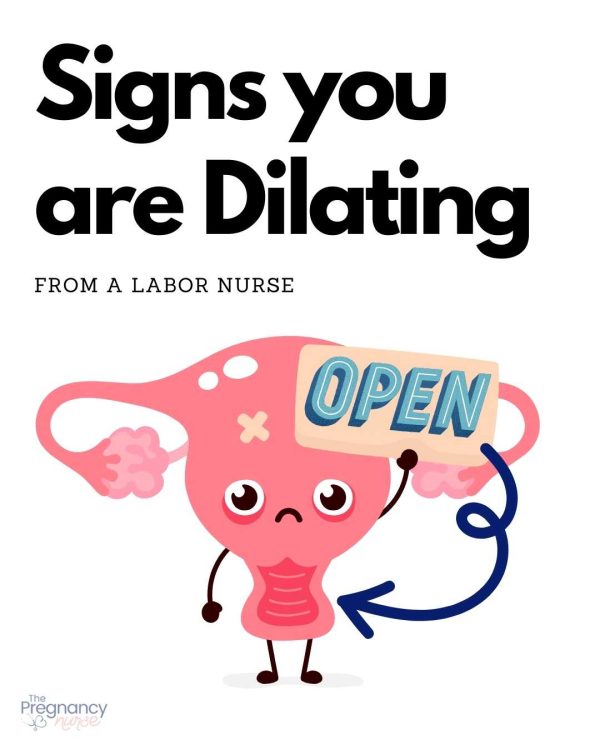
Note: Dilation is not a great thing in your early pregnancy. We would prefer to see no dilation until late into your third trimester — 37’ish weeks. Prior to that we would prefer that baby continue to develop in the womb. They sometimes will check cervix dilation and effacement on early ultrasounds to make sure you’re not going to preterm labor. Some people dilate early on which is called incompetent cervix. They will actually stitch the cervix together (called a cerclage) so that baby will remain in the womb. This article is mainly talking about dilation PAST 37’ish weeks.
Signs your are Dilating
While actually knowing if you are dilating is something that can only really be checked by a provider (usually a nurse, doctor or midwife) there are a few ways you can guess at it without a cervical check.
Needing to pee more, and more pressure in that “area”
As baby descends into the birth canal you’ll start to feel more pressure in your vagina and that “area”. Conversely, you may also feel like you can breathe a bit better as baby has moved into your pelvis away from your lungs. Some people call this lightening (although I don’t hear that much anymore) or baby dropping. It just means that baby is descending into the lower uterus and it’s head is likely pushing on your cervix causing it to open a bit.
Pro Tip: Just because the baby has lowered into your pelvis doesn’t always mean your cervix has opened — sometimes it just stretches over baby’s head until it gets the cue’s from the body to soften — but it’s a good guess.
Of course, if you think you’re dilating I gotta ask — have you packed your hospital bag — get my tips here:
Vaginal pressure sometimes with more “stabbing pains”
I honestly felt like I could feel my cervix open. I just felt some more “stabbing” pains in your birth canal as I rotated on my labor ball. When I went in the next day I was three centimeters dilated. Just makes sense that we might feel something as our cervix starts to open. People say there aren’t any pain neurons on the cervix, but I’m not so sure that is true (as an owner of a cervix).
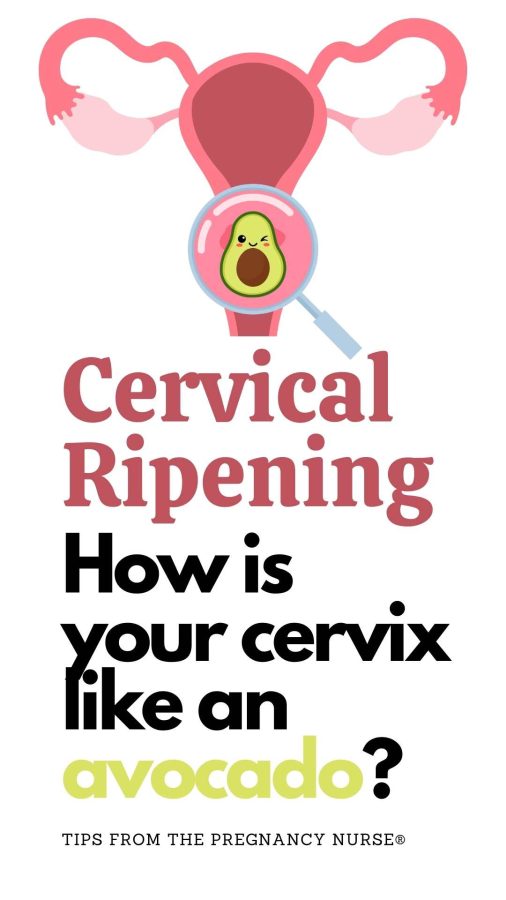
Loss of your mucus plug
Losing your mucus plug shows that your cervix has opened a bit so that it could fall out.
Prior to the mucus plug being lost your cervix was holding onto it tight. As cervical dilation happens the mucus plug dislodges (think of this plug of mucus as a “cork” in your cervix) to fall out into your birth canal (and often into the toilet). This doesn’t happen for everyone (and sometimes it sort of dissolves in your vagina and you never notice it — I only noticed it with one of my babies).
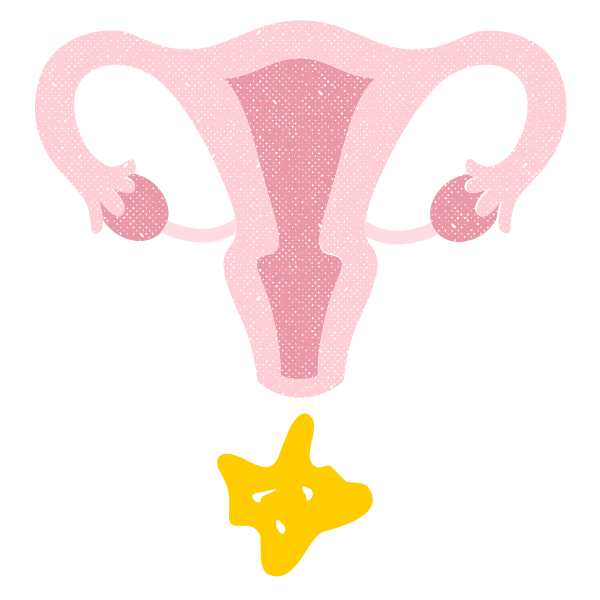
The mucus plug is normally sort of pink or brown as it is a cluster of skin cells, mucus and often a bit of older blood.
It’s a good sign that something is happening. You may also get a little bit of bloody show — but if the amount is much more than a quarter or so I’d let my provider know.
Pro Tip: Just because your cervix is starting to dilate, doesn’t mean you’re in active labor (or even in LABOR). Many people dilated 1-5 centimeters before going even into early labor (and then progressing into active labor).
Want to know more about dilating — check out these posts:
- How to Dilate Faster
- What Cervix Dilation Should You Be at 36 Weeks of Pregnancy?
- I’m 2 cm Dilated? How much longer?
- How Many CM Do You Need to Be to Get An Epidural?
What about the “purple line”
You may have heard of a purple line that ascends from your perineum up between your bum cheeks that will show if you’re dilating. Studies have shown that it can’t always be a reliable indicator of dilation and can’t be used in every case. But, it could be fun to check for… I guess? Just not always reliable (although none of what I’ve mentioned is particularly reliable either.
A lot of people don’t even see the line. Sadly. You’ll hear a lot of doulas talking about how important this line is but that may be because they can’t (or shouldn’t) check the opening of the cervix.
The purple line is one of those things I see a lot on social media that really doesn’t have a lot of real-world application (because it varies so much person to person — and people with darker skin it’s almost impossible to see)…
I know I got wound-up a bunch with birth stories, thinking I was getting prepared — but mostly I was getting scared by stuff that didn’t matter at all.
I wish I’d taken a high quality birth class instead of thinking birth stories would be enough. I recommend this one.
Why do we care about the signs of dilation?
Dilation in pregnancy gets more fanfare than it really needs, I think. Many people hope when their cervix begins to open that means they will be in labor soon. They’re tired of being pregnant, and frankly — very ready for labor! That’s why a lot of people like to get checked at 36 weeks.
Often in people on their first pregnancy tend to efface before their cervix starts to open. Meaning your cervix thins out (as told to you by your Ob-gyn or midwife) and then opens up.
Being 1 centimeter dilated often brings up high hopes as you head towards 40 weeks, but it doesn’t really mean you know you’re closer to labor than you’d be if your cervix was still closed. If you’re beginning to dilate it just means baby’s head is progressing into the birth canal, but you’ll need stronger contractions before baby is actually coming.
Want to know more signs of labor — check out these posts:
- 4 Signs You’re Almost In Labor
- 40 weeks + a day and No Sign of Labor?
- Can Labor Start While Sleeping?
- Can Curb Walking Induce Labor?
- Diarrhea at 38 Weeks Pregnant: Is it a sign of labor?
Does dilation mean you should head to the hospital?
No, that usually comes from having regular and intense contractions. Labor takes you into the hospital, not so much just dilation.
What is Dilation and Why Do I Care?
It’s a good question. Honestly, if you’re not really in active labor it doesn’t matter all that much. As I said as you get closer to your due date you will likely dilate a bit.
However once you’re in labor and you head into labor and delivery they will check your cervix. In addition to dilation (which is measured in centimeters) they will also be assessing for:
- Cervical Effacement — how thick or thin the cervix is (measured in a %)
- Position of the cervix (is it towards your back or more towards the front
- Consistency — is it soft or hard
- Baby’s position in the birth canal
They will monitor it until you get to 10 centimeters (or fully dilated), at which point you can push.
That being said — when they induce you they are working to move baby into the birth canal and get the cervix to dilate.
Want more later pregnancy info? — check out these posts:
- Pumping To Induce Labor? Will it work?
- 35 Weeks Pregnant Checklist
- How To Have A Natural Hospital Birth
- Hospital Policies You Can NOT Say No To.
- How to Push-Out a Baby
Cervix Dilation Symptoms FAQ’s:
Can you feel when you are dilating?
Not really — at least it’s not always a good sign. But I do think you can have a good idea that baby is descending into your pelvis and have some sharper changes. Depends on how quickly your cervix is changing. You may be like me and think you can feel your cervix dilating, it could be true. Again, those were usually for those early centimeters though. I didn’t feel stuff like that when I was dilating more later on.
Round ligaments can also cause sharp pains too though, so it’s tricky!
One thing you SHOULD be feeling for is fetal movement. It’s your best indicator of fetal well-being — grab my kick count cheat sheet right here:
How do you tell if you are starting to dilate?
You ask your provider to check you. Honestly, no other way is particularly reliable.
Can you check your own cervix?
Honestly, I don’t recommend it. There is a lot we learn from a cervical exam beyond how open it is. It takes a LOT of time to learn those things, so if you want to know I’d just ask at your next appointment. If you’re past 36 weeks I bet your provider would be willing.
There is a chance you could hurt yourself (from leaning over, or doing the exam wrong). It’s best left to people who know what they’re doing.
What does it look like when a woman is dilating?
The cervix (usually through contractions) starts to thin-out (called effacement) and open. Think of it as pushing your head through a tight sweater. The material at the top would thin out and open as you pushed your head through. Same idea.
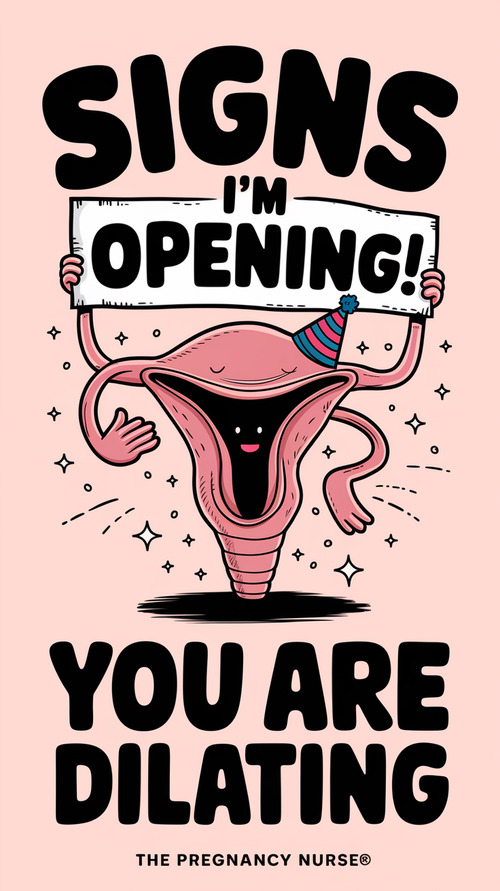
How quickly can you dilate?
If you are in the first stage of labor, not usually too fast — although some people dilate at a pretty rapid pace. I often see that the first 5 cm or so are a bit slower than the last few centimeters. I have seen people go from 7-9 cm in a matter of minutes, especially if they’ve already had a baby. Once labor begins it really depends on how hard the contractions are and how the baby is moving to create cervical changes.
Remember that even once you start having consistent contractions, early (or latent labor) can take a while.
How many days before labor should you dilate?
Just depends, we don’t always know. Some people’s cervix is closed right up until they go into labor, and some people can be quite dilated with no consistent labor going on.
If you’re dilating, how are you preparing for labor and delivery?
Dilation, as well as progressing towards the end of pregnancy does show that baby will be out soon. There are three things I recommend that you’re doing to prepare for Labor & Delivery
- Get your labor bag packed << that post has more info on that!
- Make sure you’re comfortable talking with your provider and asking questions (even small ones) — it’s great practice for asking bigger questions as you get closer to delivery.
- Get that birth class done. Bonus points if your partner does it with you. I recommend this one.
Feeling intimidated by all there is to do? Check out my free insider tips. It’s your first step toward getting in the driver’s seat of your birth.
Want more info — check out the video based on this post:


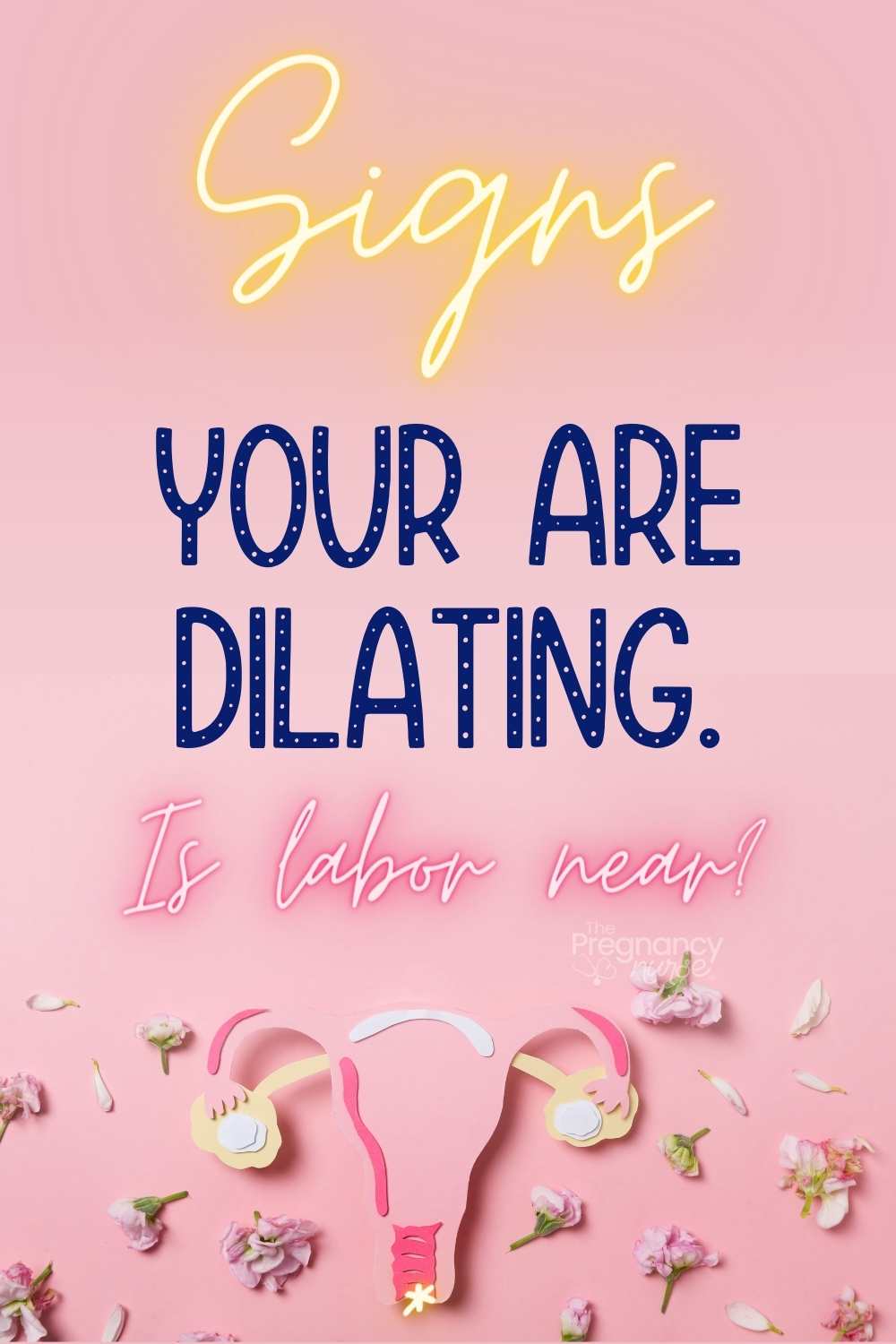
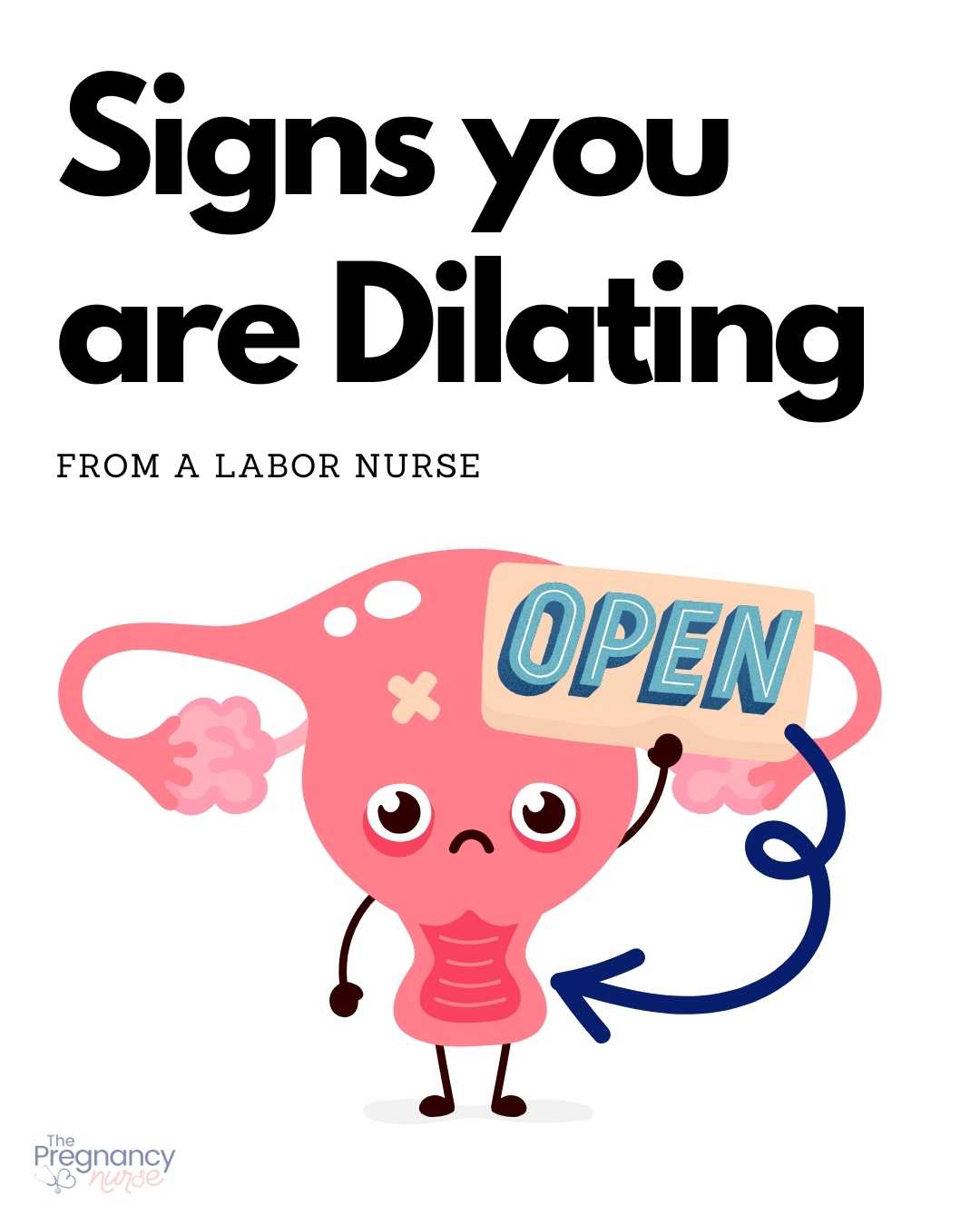
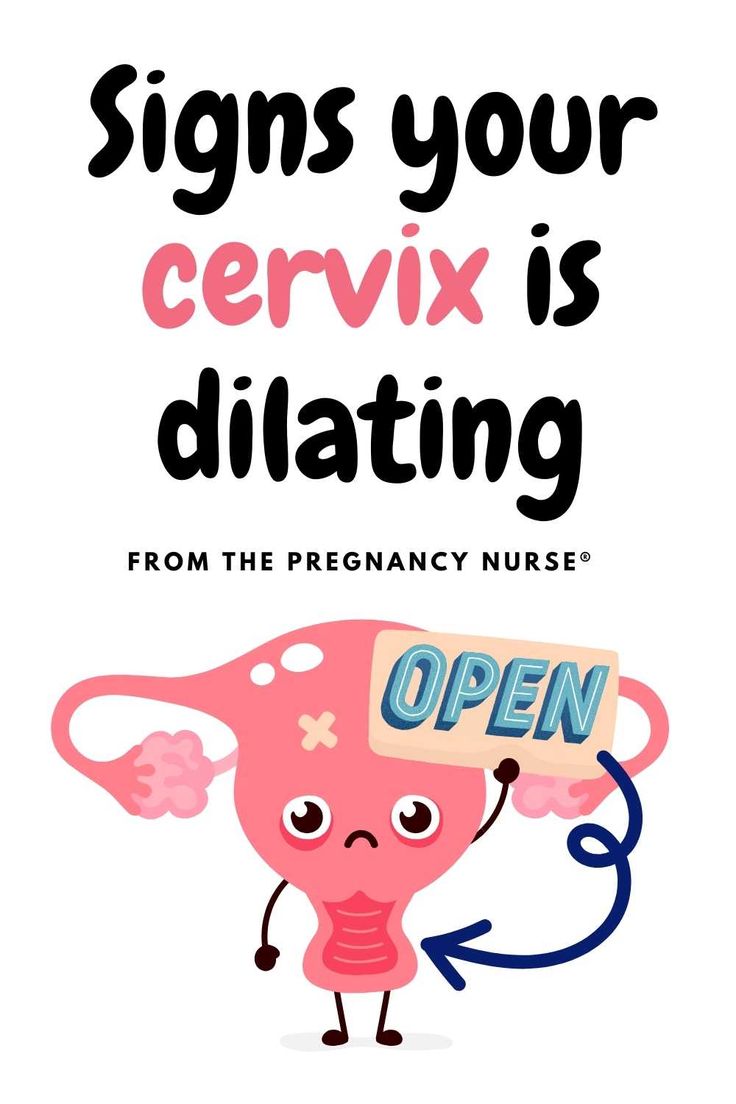




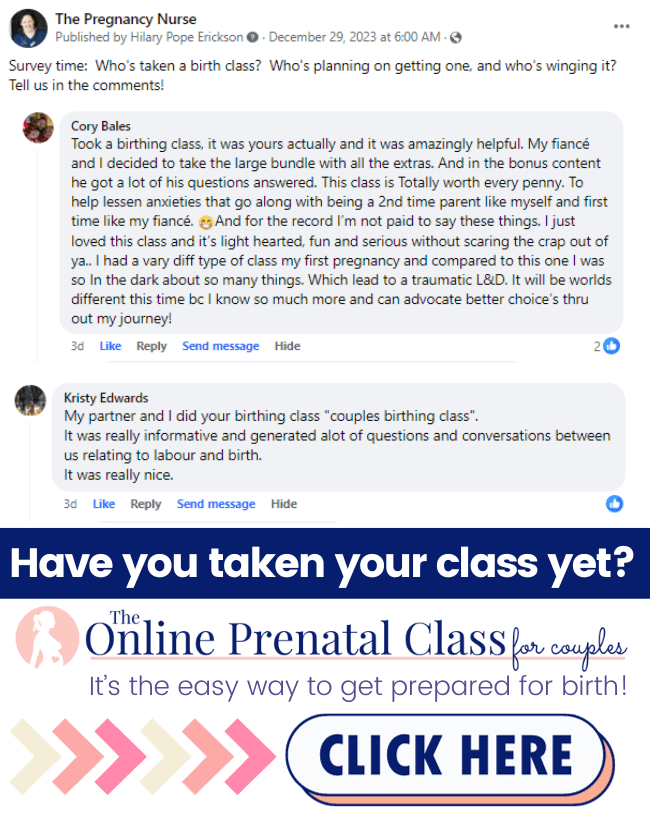


 Does Labor Still Hurt With an Epidural?
Does Labor Still Hurt With an Epidural?
